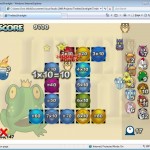 I mentioned previously that I was working on a new project.: Timbles. I also mentioned that I was developing it under Vb.net. And I also mentioned that I was using DirectX3D using SlimDX… Well… things changed…
I mentioned previously that I was working on a new project.: Timbles. I also mentioned that I was developing it under Vb.net. And I also mentioned that I was using DirectX3D using SlimDX… Well… things changed…
The game was coming along nicely, and I had taken it into school and installed it on a number of their machines, and on the whole it was working ok. Their were just a few things niggling me about the installation process. That is; it was a pain. I felt it was coming a big ask to get people who were not used to installing games, to install DirectX. And not to mention that some of the machines struggled installing .Net2.0 – once everything was installed it all worked a treat. The process was just a little off putting.
Over the last 6 months I have done very little on Timbles. I started writing the backoffice code that would become the Measurements Server for the game; the idea is that everything that happens on the game is recorded by the measurements server so that teachers can run reports to see how the kids are performing. However, I didn’t touch the game much.
Anyway, last week started doing some work with Microsoft Silverlight, ( for those of you not familiar with it – think Flash ), and I’ll touch more on the specifics in a later post. Anyway, I now have almost all of Timbles running in a browser. Which means it is supported on all the platforms supported by Silverlight.
Here are some screenshots. Please excuse the poor quality – I hadn’t realised that I’d saved them in rubbish quality mode!





I hope to get a version running on my site for testing purposes, over the next week or two.

